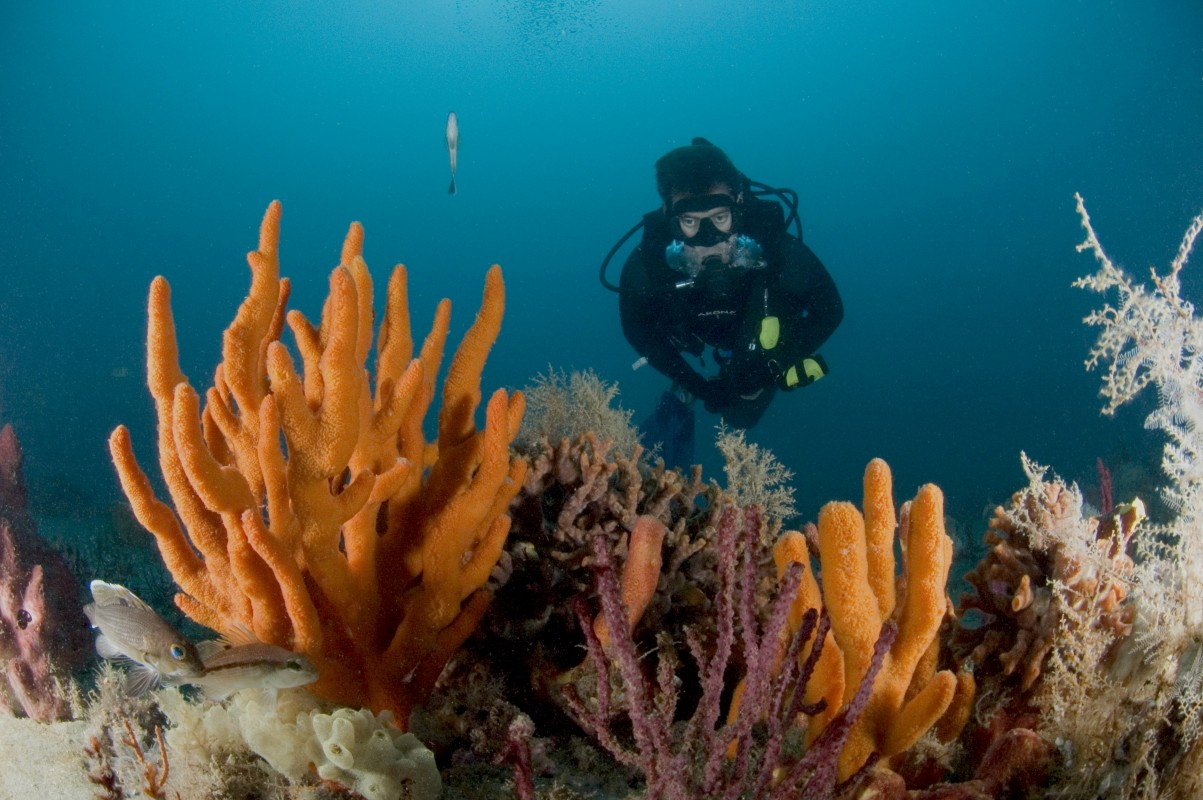World’s Largest Survey of Marine Parks Shows Conservation Can Be Greatly Improved

Marine protected areas have been created across the globe to stem the loss of biodiversity in our oceans. But are they working? Now, thanks to a six-year survey involving over one hundred divers, we know that the global system of marine protected areas still has much to achieve.
The marine environment lies out of sight and is expensive to survey, so its true condition is very poorly known. What we do know is that multiple threats—most notably introduced pests, climate change, fishing and pollution—are pervasive.
We also know that conditions are deteriorating. Numbers of many Australian marine species have collapsed since European settlement. Some species haven't been seen for decades, such as the smooth handfish, which was once sufficiently abundant to be collected by early French naturalists visiting Australia but hasn't been seen anywhere for more than 200 years.
If this were a mammal, bird, reptile, frog or plant, it would be listed under Commonwealth and state threatened species acts as extinct. As a marine fish, it has not been considered for any list.
We also know that marine species that build habitat for other species are declining. Coral cover across the Great Barrier Reef has been reduced by about 25% between 1986 and 2004. Global seagrass and mangrove cover have declined by 30% over the past century, with losses accelerating. And oyster reefs have largely disappeared worldwide, as have giant kelp forest ecosystems on the Tasmanian east coast.
Fishery catch statistics also show major population declines in commercially important species such as scallops, rock lobsters, barracouta, trumpeter, abalone, warehou, gemfish and sharks.
These snapshots all consistently indicate major detrimental change in our oceans.
Surveying the threats
Twenty years ago, in a bid to understand the magnitude of this change, I and my Institute for Marine and Antarctic Studies colleague Neville Barrett began regularly surveying rocky reef communities in collaboration with management agencies across southern Australia. These surveys were focused inside and outside marine protected areas, to disentangle effects of fishing from broader environmental changes.
We found that each marine protected area was different. Recovery within protected areas depended on a variety of local factors, including protected area size and age, how much fishing had occurred prior to regulation, the type of regulations, and whether they were enforced.
To separate these individual factors properly required investigation of tens to hundreds of protected areas, many more than we could logistically cover with our limited scientific resources.
Enlisting citizen divers
This led to the idea of enlisting support from the recreational diving community, and our new study was born.
With pilot funding from the Commonwealth Environment Research Facilities program, and on-ground direction from colleague Rick Stuart-Smith, we sought help from experienced recreational divers across Australia who are passionate about marine conservation.
More than 100 divers agreed to donate their time, learning scientific underwater survey techniques, using their weekends and holidays to collect new data, and spending long hours afterwards identifying species and entering data onto computer spreadsheets.
To facilitate this program, an independent organisation called Reef Life Survey was established. It aimed to train and support member divers during field surveys, and to distribute information collected to improve knowledge and management of marine species. An incredible amount has been achieved over the past six years through the generous efforts of Reef Life Survey divers.
Most importantly, we have established a quantitative baseline describing the current state of inshore biodiversity around Australia. Numbers of more than 2500 species of fish, seaweeds and invertebrates (such as lobsters, abalone, sea urchins and corals) at more than 1500 sites have been documented.
This is the largest marine ecological baseline for any continent worldwide. It provides an invaluable reference that can be referred to through the future for tracking impacts of climate change, pollution, introduced species, and fishing.
The Reef Life Survey baseline has also now extended globally through collaboration with scientists in 18 countries, and with additional survey data collected by trained volunteer divers during their overseas holidays.
Parks on paper, not in the ocean
Still the question remains: how effective are marine protected areas at conserving marine life?
We recently analysed data from 40 countries to understand better the underlying factors that make marine protected areas effective as conservation tools, with results published in the journal Nature today.
We found no difference between fish communities present in most of 87 marine protected areas studied worldwide, when compared with communities in fished areas with similar environmental conditions.
Many protected areas thus seem to be "paper parks" — lines on the map that fail to achieve desired conservation outcomes.
However, some protected areas are extremely effective, with massive numbers of large fish and extremely high conservation value. These effective protected areas are typified by the same recurring features: no fishing, well enforced, more than 10 years old, relatively large in area, and isolated from fished areas by habitat boundaries (deep water or sand).
Protected areas with these characteristics, such as Middleton Reef off northeastern New South Wales, had on average twice as many species of large fish per transect, eight times more large fish, and 20 times more sharks than fished areas.
Read more about Getting Marine Parks Right
For more information about the author of this article, Professor Graham Edgar, visit his profile
Photo courtesy of NOAA Photo Library - Photographers: Dr Jean Kenyon and Dr Greg McFall




